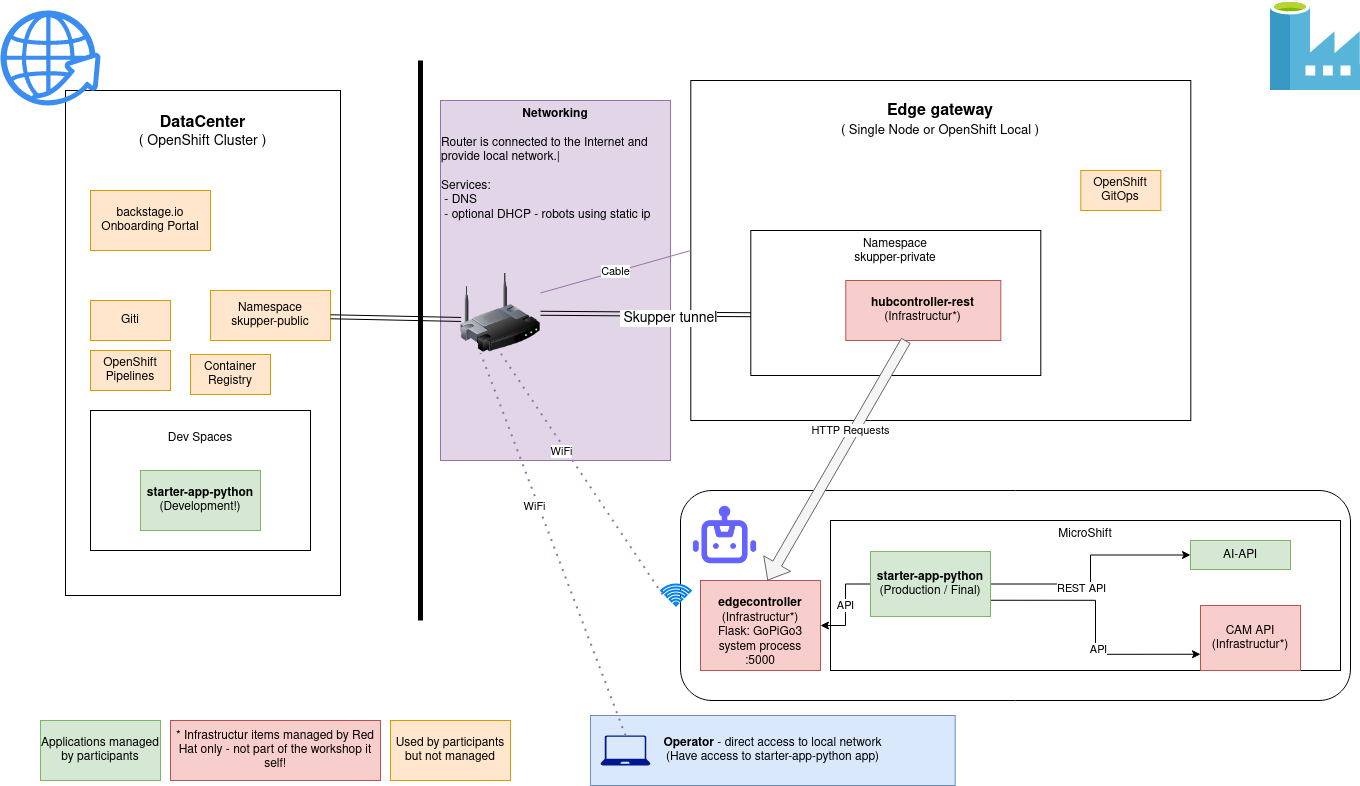- By default be build the entire end-to-end solution
- Depend on the audience we remove parts like:
- AI/ML Model Training
- Application development (starter-app-python)
- Maybe development in different languages because it just consume and ML/API, CAM IP and Robot API
- Build GitOps infrastructure and rollout applications
- Pipeline for all applications (Maybe pipeline as code )
- …
- The flow is:
- Development Application in DataCenter - or just test / with Robot Access
- Train model with new Objects
- Close connection to robot
- Depoy application on Robot
- Let’s drive the Robot in a competition situation against other teams.
During the demo we using OpenShift Local running on the presenter laptop
Required:
- Running openshift local, follow the officia documetation
Install OpenShift GitOps & OpenShift Pipelines via:
oc apply -k openshift-local/Added cluster to argocd instance
# Login into Robot
oc login -u kubeadmin ....
# Login into OpenShift GitOps at OpenShift Local instance
argocd login ...
# Add cluster to argocd instance
argocd cluster add $(oc config current-context )Example outpur of argocd cluster list:
$ argocd cluster list
SERVER NAME VERSION STATUS MESSAGE PROJECT
https://10.89.114.152:6443 goetz-robot Unknown Cluster has no application and not being monitored.
https://kubernetes.default.svc in-cluster Unknown Cluster has no application and not being monitored.Apply ArgoCD Application:
oc apply -f openshift-local/starter-app.application.yaml
oc apply -f openshift-local/hubcontroller-rest.application.yaml- Containerize GoPiGo3 cloud-native-robotz-hackathon/edgecontroller#1
